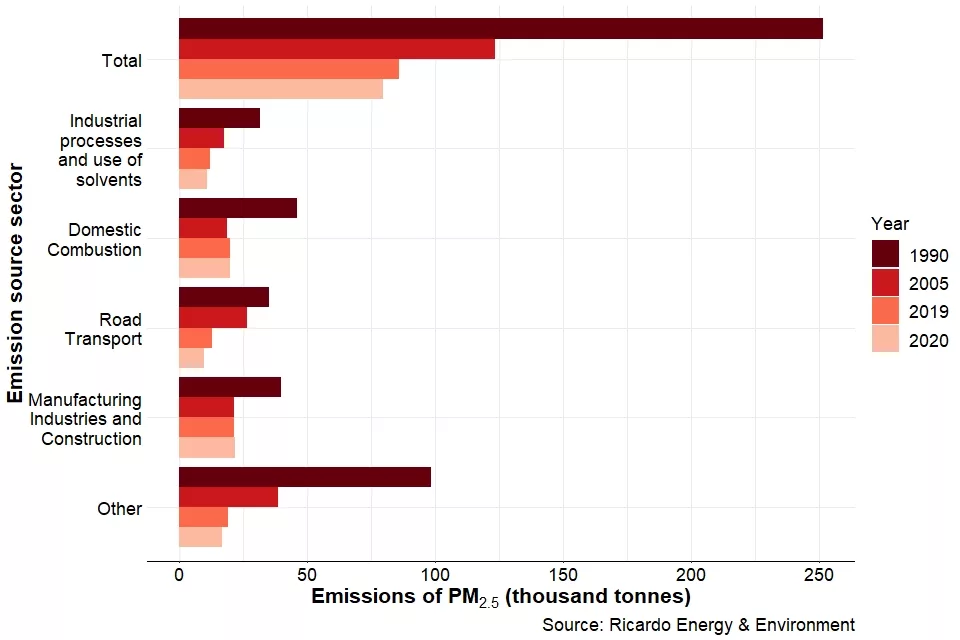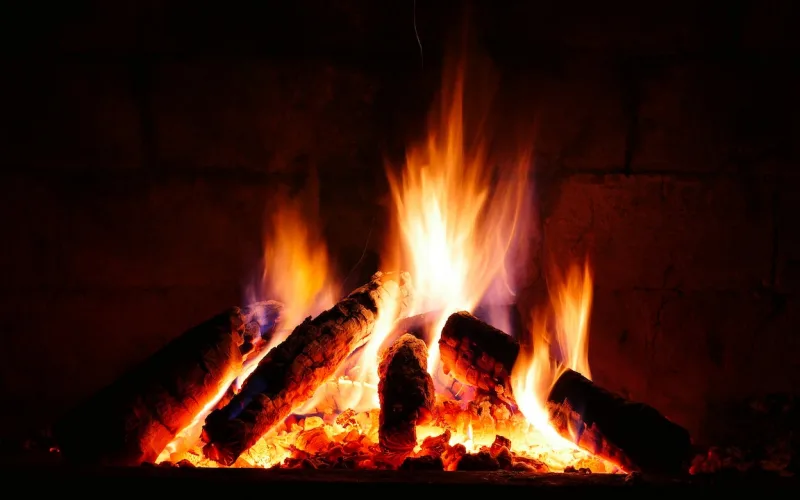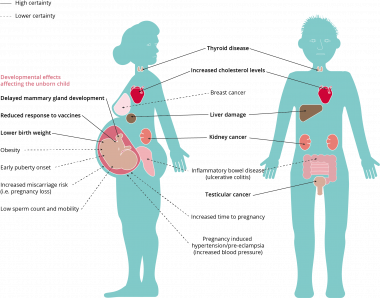Last Updated on July 28, 2023 by Ecologica Life
Burning wood may be mankind’s oldest way of generating heat – and in the home, an open fire certainly creates a nice ambience. But new research has undoubtedly highlighted the many health and environmental issues associated with using a wood burning stove or fireplace.
Table of Contents
Harmful Effects of Burning Wood
Wood-burning stoves and fireplaces are no longer just about rustic charm or nostalgic atmosphere. They are now part of a global conversation about clean air strategy, carbon neutrality, and our transition away from fossil fuels.
There’s a swirl of claims and counter-claims about these cosy sources of heat. So, it’s high time we clear the air about wood burners, stoves, and their impact on air quality.
Is Burning Wood Bad for Your Health?
A study from 2020 revealed that wood-burning stoves triple the amount of unhealthy indoor air pollution. The authors of the study say that wood-burning stoves should be sold with an accompanying health warning. One thing to note, all stoves investigated in this study were at the time certified by the UK’s Department of Environment, Food, and Rural Affairs (DEFRA).
Unlike fireplaces, burner stoves come with a closable door. The researchers discovered that when the burner doors are opened for refuelling, particulate matter (PM) comes flooding into the room. Additionally, individuals who load in wood more than twice in a single evening, are two to four times more likely to be exposed to high levels of particulate matter.
This fine particulate matter can pass through the lungs and get lodged in organs such as the heart. PM matter has been shown to increase the likelihood of respiratory and heart diseases. In Europe, ambient air pollution from household heating with wood and coal is responsible for 61,000 premature deaths annually, with an additional 10,000 deaths in North America.
Is Burning Wood Bad for the Environment?
Firstly, it’s important the note that burning wood releases both useful energy and various forms of pollution. The EU promotes energy generated by burning any type of wood as “renewable” and even “CO2-neutral.”
Wood is classified as a renewable energy source. One reason being that trees absorb carbon dioxide (CO2) from the atmosphere during photosynthesis. When wood is burned, that stored CO2 is released back into the atmosphere. This process makes wood burners a potentially carbon-neutral heating option, assuming the wood is sustainably sourced and new trees are planted to replace those harvested
Unfortunately, it appears that this may not be the case. Research has shown that burning trees for energy produces more carbon dioxide than using coal or gas in the short run.
Burning wood also releases small particulate matter (PM2.5), and other pollutants that contribute to poor air quality. This has raised significant concerns, particularly in densely populated areas. PM2.5, for instance, is known to pose long-term health risks. This is because these tiny particles can penetrate deep into the lungs and cause various respiratory diseases.
In 2020 the UK government published data that shows that wood burning at home was producing three times the amount of fine small particulate pollution as traffic, and responsible for 38% of fine particulate matter emissions in 2019. According to a different government-commissioned study, just 8% of the population created this fine particulate pollution from burning wood at home.
In response to this many countries, including the UK launched a clean air strategy in 2019. The UK government have since made new regulations as of 2022 to improve wood-burning stove design. The government is also phasing out the sale of wet wood, which produces more smoke.
Figure 1: UK annual emissions of PM2.5 by major emissions sources: 1990, 2005, 2019, 2020

Europe’s Zero Pollution Plan: In Progress
The UK government’s approach largely centres on encouraging the use of “exempt stoves,” also known as DEFRA approved or Ecodesign stoves, which are designed to burn wood more efficiently and produce fewer pollutants.
However, exempt stoves, while better than their traditional counterparts, are not a complete solution. Even these advanced stoves release some degree of pollutants, and they require well-seasoned or kiln-dried wood to operate at maximum efficiency.
Beyond the stove itself, the process of collecting, processing, transporting, and storing wood also has an environmental impact. Even if wood burning might be carbon neutral at the point of use, the entire lifecycle of the wood must be considered. For instance, if forests are cleared for wood and not replanted, or if fossil fuels are used extensively in the processing and transportation of the wood, this can offset any carbon neutrality gains.
Environmentally Friendly Alternative to Wood Burning Stove or Fireplace
Heat pumps, heat batteries and electric radiators are all better ways to heat your home than a burning stove or fireplace. What matters here is the source of the electricity. To reduce your carbon footprint it is a good idea to check with your energy provider. Greener tariffs are currently being offered by energy providers all around the world.
In the long term, you can lower your household emissions and save money on your energy costs by moving to a company that uses electricity generated by solar, wind, or hydroelectric power. Solar panels are another option that are becoming widely available.
If you decide to stick with wood. Make sure your stove or fireplace complies with the newest regulations. This will help you minimise the effects on your health while also being more eco-friendly








